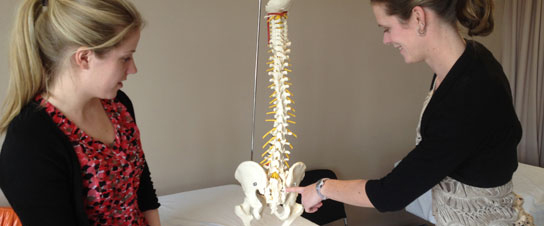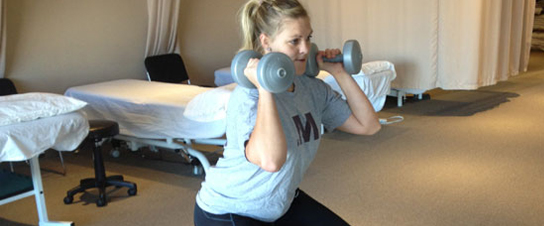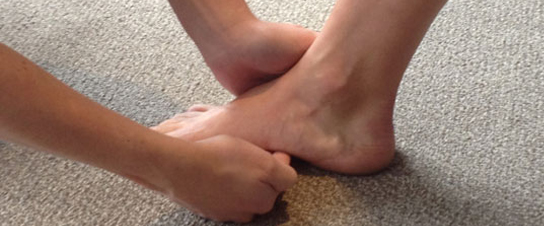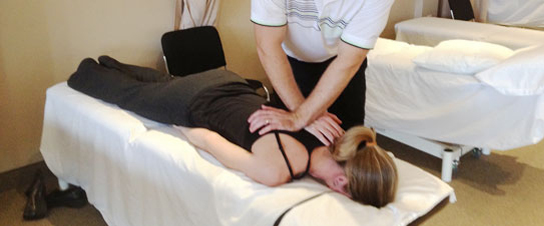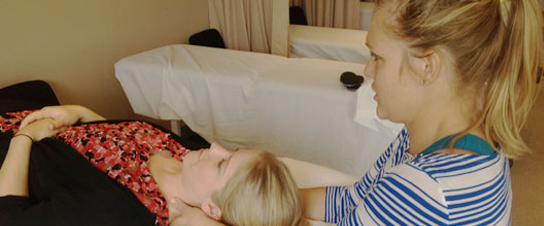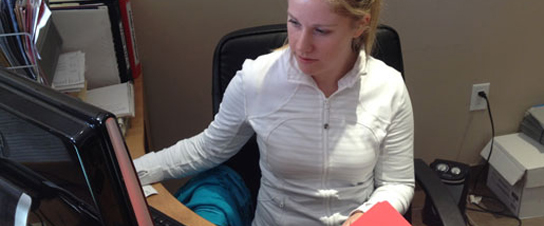COVID-19 QUESTIONS:
Q. What is Telerehabilitation (video-based physiotherapy treatment)?
A. Telerehabilitation is video-based therapy where you have secure and private one-on-one sessions with a physiotherapist from the safety of your home. Your physiotherapist will assess your condition by asking specific questions about your condition and observing you do different movements. Your physiotherapist will teach you about daily activities that will impact your condition and how you can use exercise and home remedies to help get you moving faster. Exercises are progressed as you move toward full recovery. Most Extended Health Insurance plans are providing coverage for this care.
Q. What kind of device do I need to do a video session?
A. You can use any type of device that allows both camera and microphone access so both particies can see and hear each other (for example: laptops, tablets, smartphones, and desktop computers with a webcam).
Q. Will this be covered by my extended health insurance plan?
A. Most extended health insurance plans will cover telerehabilitation sessions under your physiotherapy coverage. Contact us to ask us about your insurer or phone your insurance provider for more information.
Q. Can you bill directly to my insurance company for Telerehabilitation?
A. Yes, this service is available for many extended health insurance companies. Ask us for more details.
GENERAL QUESTIONS:
Q. What can I expect at physiotherapy?
A. At the first visit, a physiotherapist will perform an assessment where they will learn about your medical history and current injury. Next, they will assess you by observing how you are moving, determining your strength, and performing other specific tests in order to diagnose your injury. You will then receive a treatment plan with goals. Treatment will start after the assessment, and typically includes a combination of soft tissue massage, manual therapy, exercise prescription, and using modalities. Patients typically continue to return for treatment sessions, or “follow-ups” on a regular basis until the impairment is resolved, or function is restored.
Q. What problems do physiotherapists treat?
A. Physiotherapists (as well as athletic therapists) can treat an array of issues:
– neck and back pain
– injuries to bones, joints, ligaments, muscles, tendons (i.e. arthritis, sprains, strains, etc.)
– post-operative patients (i.e. rotator cuff repairs, ACL reconstruction, total hip and knee replacements, etc.)
– pelvic pain and issues, including bladder and bowel problems, and pre- and postpartum pelvic floor rehabilitation
– loss of mobility due to other conditions (i.e. Parkinson’s disease, multiple sclerosis, ankylosing spondylitis)
– concussion and vestibular system issues (problems with balance and dizziness)
Q. Do I need a doctor’s referral?
A. For physiotherapy, massage therapy, and athletic therapy, this is dependent on your extended health insurance policy. Some plans require a doctor’s referral in order to reimburse you for your assessment and treatment sessions. Other policies do not require a physician referral, and therefore it is not necessary to see a doctor prior to your first visit.
For chiropractic assessments and treatments, you do not need a physician’s referral.
Q. How long will my appointments be?
A. For physiotherapy, chiropractic, and athletic therapy initial assessments will take approximately 45-60 minutes. Follow-up treatments after that will require less time, around 20-30 minutes. Follow-ups may be longer if your therapist finds it appropriate, or if you have multiple injuries.
For massage therapy we offer sessions for 30, 45, 60, and 90 minutes. Depending on the area(s) of concern, you may need more or less time. For example, massage on a single area like the neck may need less time (30-45 min), but multiple areas may need longer (45-60 min). If you are unsure, we recommend booking at least 45 minutes at your initial visit, and you can speak with your massage therapist on what they would recommend for future appointments.
Q. How often do I need to come for treatment?
A. Every person and their injury or condition is unique, so it is difficult to place a timeline on recovery. Some patients recover within 2-3 weeks, and for others it can take months. Response to treatment depends on several factors:
– the complexity of the injury
– how long the problem has been going on for
– how the problem/injury started (acute/traumatic onset versus chronic/gradual onset)
– severity of structural damage
– other medical conditions affecting recovery
– your commitment and motivation to solving the problem
– your willingness to utilize advice and perform home exercises provided
Your therapist will help you determine the estimated frequency of treatment based on your initial assessment. Frequency will be flexible as it can change over the course of treatment based on your response and status of your injury.
Q. What should I wear to my appointment?
A. We recommend that you wear comfortable and loose-fitting clothing, particularly around the injury or painful site. You need to be able to move freely, without being restricted by clothing. For example, if you have a knee injury, wearing shorts or loose pants that can be rolled up above the knee are both acceptable.
Q. Are private rooms available?
A. Yes. We have two private rooms that are typically used for massage therapy clients, but upon request, can be utilized for privacy for physiotherapy, chiropractic, and athletic therapy patients. Our general treatment area is open concept, with the option of drawing curtains around each treatment table and area to provide some privacy. Patients attending for pelvic floor physiotherapy are always assessed and treated in one of the available private rooms.
Q. How are my assessments/treatments funded?
A. Extended health insurance policies will cover the costs for most services. We encourage that you check your policy to see which services are specifically covered, including physiotherapy, athletic therapy, chiropractic, and massage therapy. The total coverage of costs will vary across different health insurance providers and plans. If you do not have extended health insurance, payment for sessions will need to be made out-of-pocket. We are not covered by OHIP at this facility.
Q. Can you bill directly to Insurance companies?
A. Yes, we can bill directly for a majority of insurance companies, but there are some exceptions. Our administrative staff can help you determine if your insurance company is eligible for direct billing.
Q. Do you treat MVA injuries?
A. Yes. We ask that you notify us prior to your first assessment, and be sure to bring your auto insurance information, including your insurance provider, claim number, and policy number with you.
Q. Do you treat WSIB injuries?
A. Yes. We ask that you notify us prior to your first assessment. We highly recommend that you start your claim and file the necessary paperwork with your employer to ensure a timely transition to starting treatment. You will need a claim number and confirmation of approval from WSIB prior to your first visit.
Q. What is the difference between physiotherapy and athletic therapy?
A. In the clinic setting, there are not many obvious differences between physiotherapy and athletic therapy. Both professions are highly skilled healthcare providers in the field of musculoskeletal and orthopaedic health and rehabilitation. Physiotherapists are trained and educated in helping assess and treat conditions across wider range of body systems, including orthopaedic, neurological, and cardiorespiratory systems. Athletic therapists are mainly trained in the care and prevention of musculoskeletal disorders. Additionally, athletic therapists have extensive training in the emergency and immediate care for on-field injuries at athletic and sporting events.






